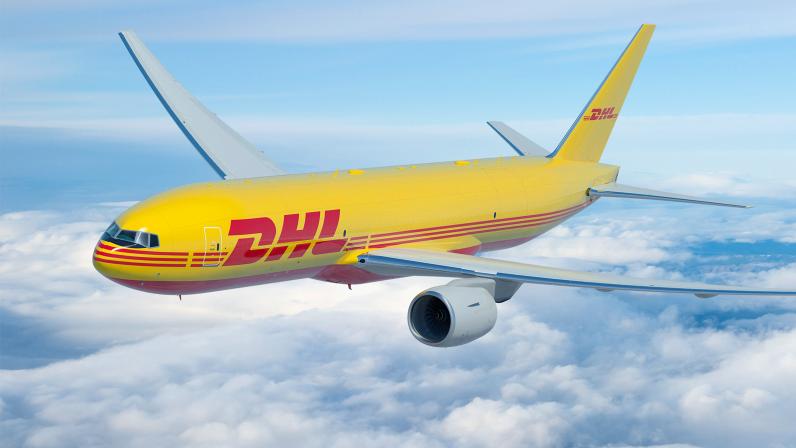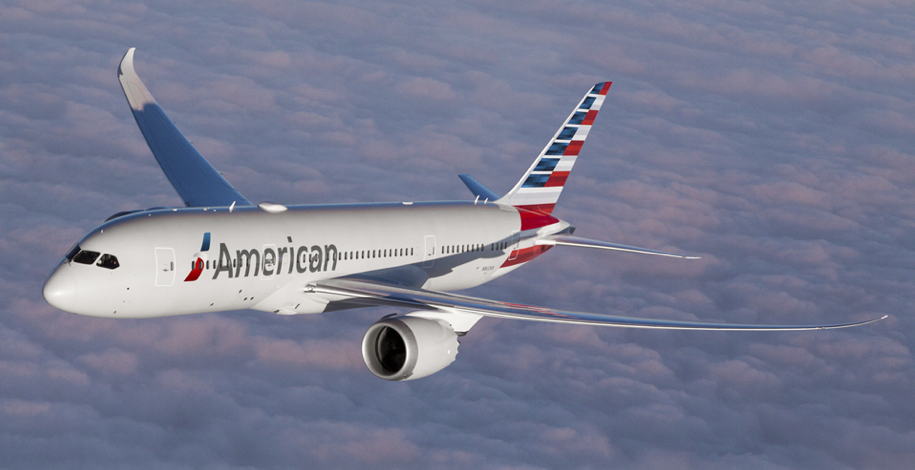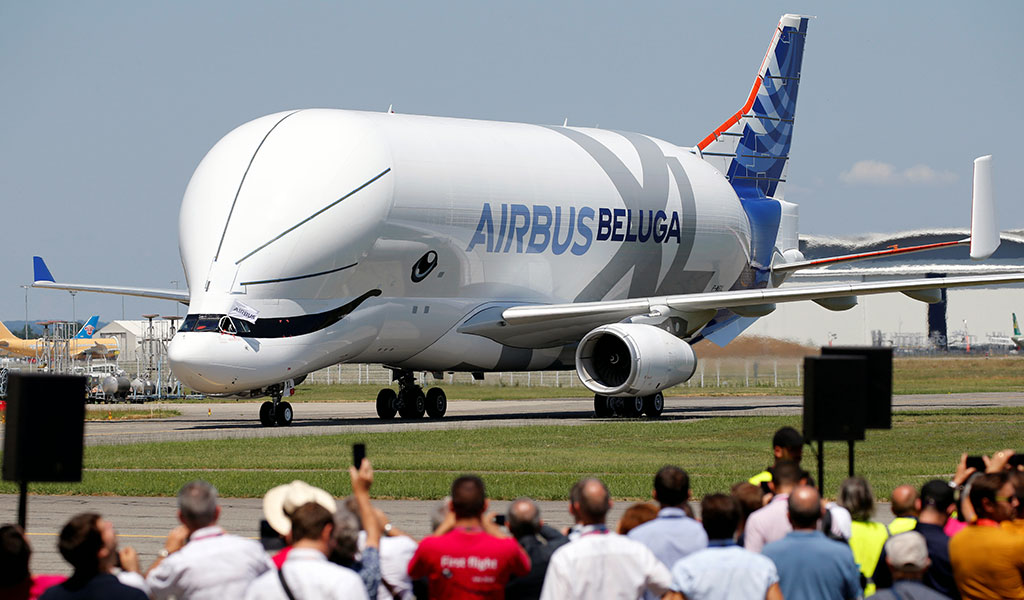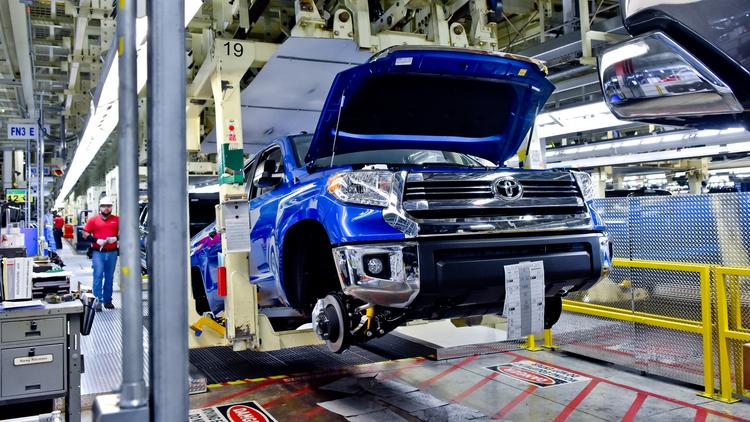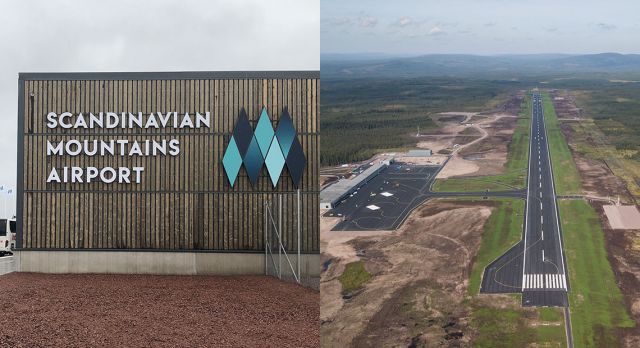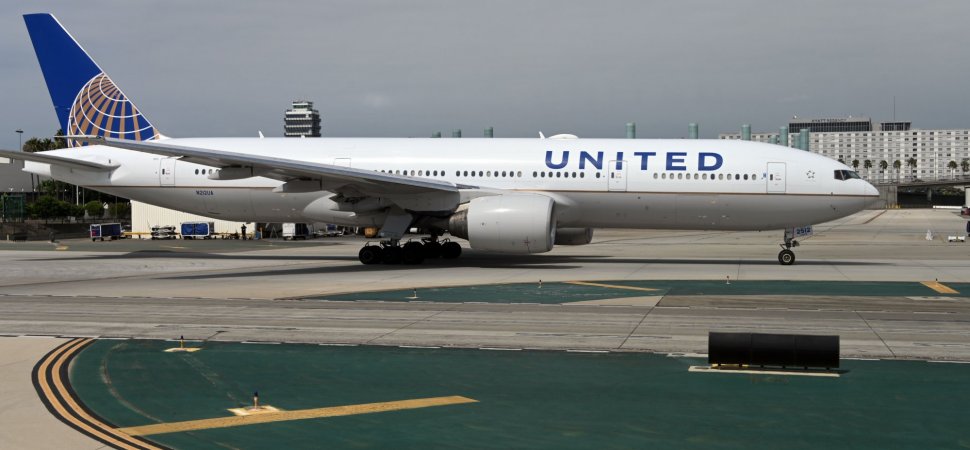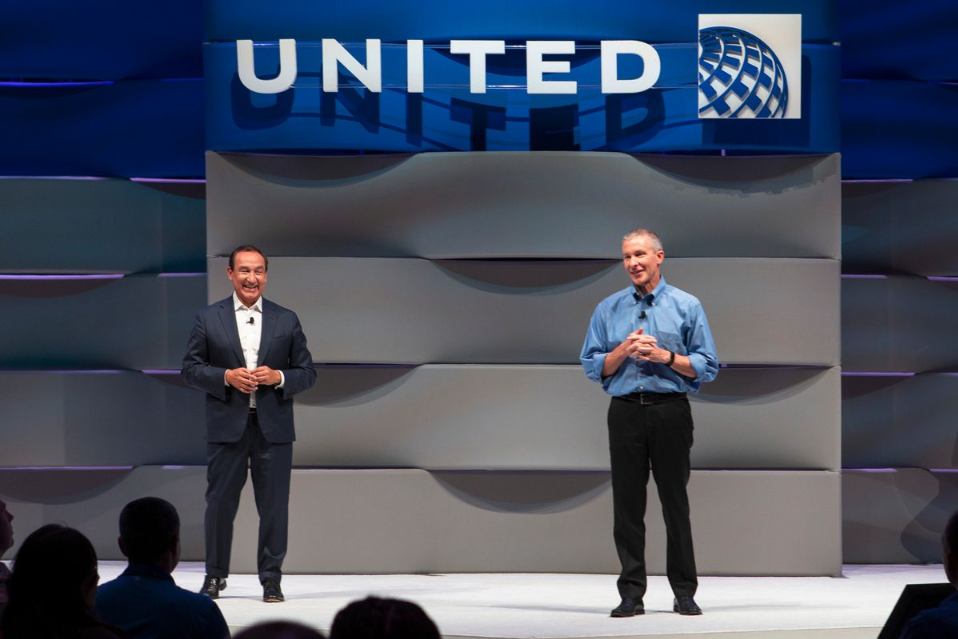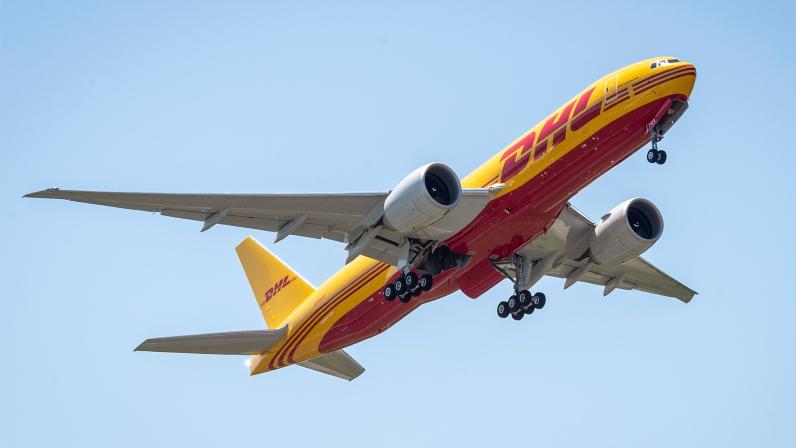
- First delivery of 2020 batch accomplished, recent 777F touched down at its operational home base Cincinnati last Thursday
- DHL continues strengthening its intercontinental network by renewal of its long-haul aircraft fleet
- State-of-the-art aircraft also supports the Group’s goal of improving its carbon footprint
DHL Express, the world’s leading international express service provider, is receiving six new Boeing 777F-200 cargo aircraft this year. The first of these planes to come in 2020 landed last Thursday at its future base of operations, the Cincinnati/Northern Kentucky International Airport (CVG). In 2018 DHL ordered 14 new Boeing 777F, with four delivered in 2019, six to come this year and the remaining four to be taken into service in 2021. The current freighter will be operated by DHL Express’ partner airline Kalitta. The renewal is part of the overall modernization of the long-haul intercontinental fleet of the courier company and replaces older planes. The Boeing 777F is equipped with top-of-the-line fuel-efficient technology and features the longest range at full payload of any widebody freighter aircraft. This allows DHL to operate with higher efficiency while meeting the increasing global demand for express logistics service.
“We’re excited to welcome more Boeing 777Fs to the DHL Express family this year,” says John Pearson, CEO of DHL Express. “With the modernization of our intercontinental fleet, we can simultaneously enhance our proven ability to meet growing demand, improve our environmental footprint and deliver best quality service to our customers. DHL has made its mark time and time again with innovative solutions and technologies. We are pleased to continue demonstrating to partners and customers alike how these advancements stand to elevate the entire express logistics industry while bringing us closer to achieving our Strategy 2025 goals.”
In the center of its Strategy 2025 DHL Express focusses particularly on ‘E-commerce’ as a growth driver and ‘efficiency’ for further increasing its profit. With a payload capacity of 102 tons and a range of 9,200 km, the B777F has the largest capacity and range of all twin-engine freighter aircraft. They are also more fuel-efficient, reliable than older planes and reducing CO2 emissions by 18 per cent. DHL Express operates over 260 dedicated aircraft with 17 partner airlines on over 3.000 daily flights across 220 countries and territories.
“We expect further growth in cross-border e-commerce trade and, as a result, increased demand for our express logistics services and expertise in intercontinental deliveries,” says Travis Cobb, EVP Global Network Operations and Aviation at DHL Express. “With the new Boeing 777Fs, we can increase our intercontinental connections while reducing carbon emissions and fuel consumption. This enables us to continue to provide customers with the excellent quality they’ve come to expect from us while we work to expand our global services.”
